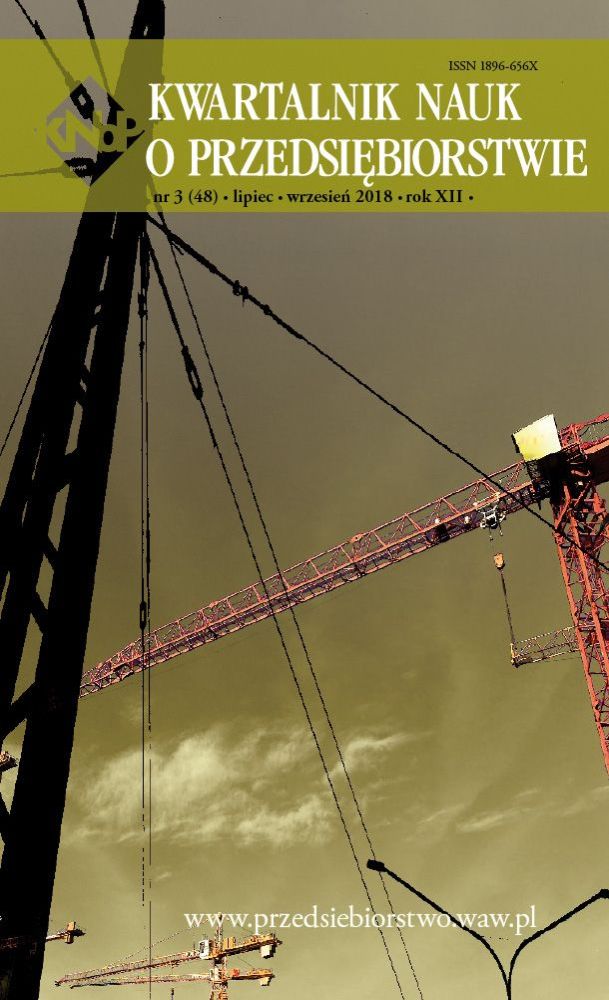Hybrid model of airlines as a determinant of the development of air carriers
Main Article Content
Abstract
The aviation market is one of the most dynamic factors determining economic develop-ment in the world. In addition, it is susceptible to economic and political crises. The air services market is also characterized by a very large diversity of clients within the market segments. Adaptation of an appropriate business model may be a condition for success, with the increase of ASK, RPK and LF ratios.
The aim of the work is to indicate the basic elements of business models of airlines that make up the hybrid model. The article also describes the evolution of Ryanair, which from the carrier emphasizing the lowest price aspires to the carrier offering flights with better quality than its competitors. The source materials of the study are available literature on the subject, own analysis based on secondary sources.
Downloads
Article Details
The author of the article declares that the submitted article does not infringe the copyrights of third parties. The author agrees to subject the article to the review procedure and to make editorial changes. The author transfers, free of charge, to SGH Publishing House the author's economic rights to the work in the fields of exploitation listed in the Article 50 of the Act of 4 February 1994 on Copyright and Related Rights – provided that the work has been accepted for publication and published.
SGH Publishing House holds economic copyrights to all content of the journal. Placing the text of the article in a repository, on the author's home page or on any other page is allowed as long as it does not involve obtaining economic benefits, and the text will be provided with source information (including the title, year, number and internet address of the journal).
References
Brzezińska-Walaszczyk M. [2015], Dobre praktyki w komunikacji marek w mediach społecznościowych, „Studia Medioznawcze”, nr 4(63).
Brzóska J. [2009], Model biznesowy – współczesna forma modelu organizacyjnego zarządzania przedsiębiorstwem, „Organizacja i Zarządzanie”, Nr 2(6), Wydawnictwo Politechniki Śląskiej, Gliwice.
Conrady R., Fichert F., Sterzenbach R. [2013], Luftverkehr. Betriebswirtschaftliches Lehr- und Handbuch, Verlag, Monachium.
IATA [2007], InterVistas, Estimating Air Travel Demand Elasticities – Final Report, IATA, December 2007.
IATA [2018], Special Report. The Price of Loyalty, IATA, www.iata.org, dostęp: 28.02.2018.
Iwińska-Knop K., Szymczak A. [2017], Wykorzystywanie mediów społecznościowych w komunikacji marketingowej polskich portów lotniczych, „Handel Wewnętrzny”, nr 3/2017.
Jabłoński M. [2014], Projektowanie i dojrzewanie modeli biznesu przedsiębiorstw przez wymagania rynku kapitałowego na przykładzie NewConnect, Zeszyty Naukowe Uniwersytetu Szczecińskiego, nr 803/2014, Wydawnictwo Uniwersytetu Szczecińskiego, Szczecin.
Low J., Kalafut P.C. [2004], Niematerialna wartość firmy, Kraków, Oficyna Ekonomiczna.
Nowak B. [2015], Wielość modeli biznesu czy model hybrydowy – strategiczne wyzwania na rynku przewozów lotniczych, w: Nowe myślenie w zarządzaniu strategicznym przedsiębiorstwem, M. Poniatowska-Jaksch (red.), Warszawa, Oficyna Wydawnicza SGH w Warszawie.
PAIZ [2018], Report on the aviation market in Poland, PAIZ, http://www.paiz.gov.p, dostęp: 23.02.2018.
Rucińska D. [2011], Badania rynku usług lotniczych . Istota, zakres, użyteczność, przykłady, Zeszyty Naukowe nr 9, PTE, Kraków.
Ruciński A., Madej K. [2016], Polski rynek transportu lotniczego w perspektywie 2030 roku, „Studia Oeconomica Posnaniensia”, Vol. 4, No.7, Poznań.
Szymczak A. [2016], Wykorzystywanie programów partnerskich w kreowaniu lojalności klientów linii lotniczych, ”Journal of TransLogistics”, Vol. 2(12), No 1.
Szymczak A. [2017], Wykorzystywanie mediów społecznościowych w komunikacji marketingowej polskich portów lotniczych, „Handel Wewnętrzny”, nr 3/2017.
ULC [2018], Raport Urzędu Lotnictwa Cywilnego, ULC, http://www.ulc.gov.pl, dostęp: 25.02.2018.
Wensveen J. [2015], Air Transportation, Ashgate Publishing Company.

